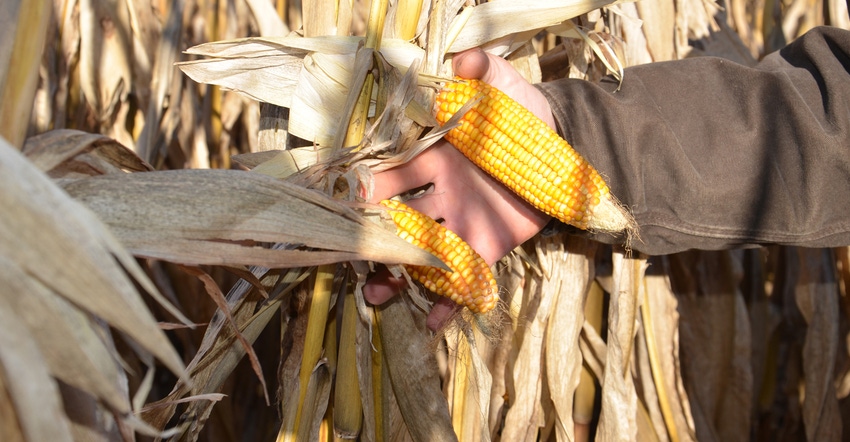
Lots of factors influence corn yields and potential profits in any one season. Some of them are under your control, while some aren’t things you can do much about.
Bob Nielsen, Purdue University Extension corn specialist, lays out five broad agronomic areas related to corn production that he believes you need to make decisions about before the 2018 season. How you handle these decisions can affect corn yield and potential farm profits.
1. Soil moisture management. In most of Indiana, you’re dealing with poor natural soil drainage, Nielsen says. In a few areas, the key is deciding if you can provide irrigation instead.
“Poor drainage makes all other factors worse,” Nielsen says. “You get poorer root development, shallower roots, and you’re more likely to create soil compaction during the season. You don’t need a yield monitor to tell you if and where you have a soil drainage problem that you might consider resolving.”
Nitrogen is also affected by drainage, he adds. Poor drainage can lead to denitrification and N loss. Drainage problems left uncorrected also affect timeliness of field operations.
2. Soil compaction issues. Poor internal soil drainage makes it easier to create compaction when you drive over soils that are too wet for working. At the same time, soil compaction also makes drainage even worse, Nielsen says. Compacted soils don’t drain as well. “It’s a vicious cycle in some fields,” he says.
Recognize that soils are most vulnerable to compaction when the moisture level is at field capacity, he adds. That’s typically the “it’s a bit heavy but I am going to go anyway” stage.
If dry weather follows after a wet spring, the effects of those decisions will be magnified. Managing and minimizing soil compaction is a way of minimizing risk, Nielsen says.
3. Soil fertility. The biggest management challenge seems to be taking representative soil samples regularly — every three to four years, Nielsen says. If you sample on 2.5-acre grids, he says it’s a spatial problem because you’re not getting information on the areas in between sampling points. Especially for soil pH, 2.5-acre grids don’t cut it, Nielsen says. “You really need to sample zones at 1 acre per sample,” he says. “Ideally, one sample per half acre would be better.”
4. Hybrid selection. “We need hybrids better-suited to a range of conditions, because that is what we see even with one condition over a period of years — a range of conditions,” Nielsen says. Look for hybrids that are at or near the type in a wide variety of trials year in and year out, he adds.
5. Pest control — diseases, insects, weeds. Hybrid selection plays a role here too, Nielsen says. You need to make sure hybrids have resistance to key diseases in your area. And if you’re not buying traits for corn borer and rootworm, then you need to be ready to scout and take action, if necessary.
About the Author(s)
You May Also Like




